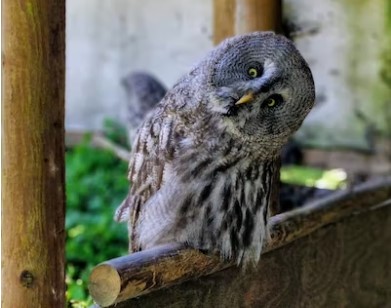Wellness has been a hot topic inside schools and out, especially after a once-in-a-lifetime pandemic. There is ample evidence that anxiety has accelerated, and this has a direct impact on performance for students in school and adults at work and life.

Two problems persist with individuals who struggle with anxiety. The first is that many proposed solutions are longer term and expensive in resources or financing. Considerable allotments of time, resources and energy are necessary. These may include techniques like meditation, therapy and medication. While these may work, they may not have a quick effect.
The second is that our society demands a fast-paced lifestyle, and this makes impractical the possibility of time-consuming methods and makes it difficult to slow down. Indeed, individuals need effective and short-term solutions to respond to the rising tide of anxiety that has a strong and rapid effect.
Two techniques — working to spark curiosity and broaden students’ view — are short-term, evidence-based options and offer a practical pairing in any setting. You won’t need a yoga mat, fire pit, prescriptions or a doctor’s office to access these strategies. Anyone can leverage each of these on demand.
Curiosity
We all appreciate that look on a child’s face when they discover something new and amazing. You can feel the excitement and energy in the child. Novel arrangements throttle their motivation, so why then do we still place children into rows and use low-engagement techniques? Why do opportunities for curiosity fade as adults grow up, as we get steered away from it?
Certainly, gaining mastery begins to trim down the less-known in our knowledge base; the chance for discovery decreases as assumed knowledge increases. However, maintaining an open mindset certainly has its advantages, even and especially far into adulthood.
Students can’t be curious and anxious at the same time
Consider curiosity as a superpower, as it has the capacity to serve quite practically as the antidote to anxiety. Why? Because a curious mind can interrupt your anxious brain from pondering every what-if or worst-case scenario, something our primal brains are hardwired to hijack us into. While anxiety summons fear, curiosity provokes wonder.
A curious mind triggers the same reward centers of the brain as are activated when we master something new or achieve a goal. Experiencing a reward high, a curious mind can generate a dopamine boost — the feel-good neurotransmitter that elicits sensations of pleasure and joy. These emotions literally switch anxiety off and positivity on.
Many simple and effective actions can help spark curiosity in learners. Many, if not most, of these ideas are not traditional teaching practices. When students are clustered and asked to master content, they have less opportunity to engage in curiosity. Letting students immerse themselves in tactical curiosity is meaningful and empowering because it offers them a choice. Try these three ways to invigorate wonder:
- Ask interesting and relevant questions. Withholding the answer (as teachers and parents are often tempted to do) is one way to spark curiosity. How often do we hear students yell, “Ooh, ooh, ooh!” with their hands held high, dying to answer the question? One example of a meaningful prompt students will dive into is “Why do you think schools have dress codes?”
- Connect to student entry of understanding. Consider this as a trick to prime the pump. “What do you know about dress code and the law?” Prior knowledge can help get the gears going.
- Prompt students to make it desirable to fill in information gaps. This can be done in group work or pairs with students serving as experts of a focal point and sharing with partners who have different knowledge bases. Bring them together to bridge the gap. For instance, have one student read the beginning and the other the end of a story, and then ask them to share their knowledge to patch the pieces together — like the intrigue of detective work discovery.
Panoramic vision
When we narrow our focus, evolution drives us to prime our mind for fight, flight or escape. Think about a cat homing in on a mouse. It narrows its gaze to a very limited view. You can see their eyes shrink. A panoramic view reverses this field and mindset too. Consider when you gaze at a breathtaking landscape and truly take in the sights. This practice literally triggers a part of the brain involved in alertness and arousal.
We can switch off the stress response by shifting our view, similar to the way you can relieve anxiety if you spark curiosity. You can make use of how you view a space to become more alert and calm while lowering your level of stress. Neuroscientist Andrew Huberman discusses incorporating panoramic gazing to reach incredibly satisfying levels of solitude and productivity.
By scanning with peripheral vision, you expand your mind, increasing the speed of neural processing and creativity. This is why learner-friendly and open classroom layouts are proven to increase engagement, alleviate stress and promote collaboration among groups of students working together.
Consider two ways to apply peripheral vision tools. First, teach students to engage in panning and examining holistically the spaces they are in. Second, set these spaces up in as optimal a layout as possible to explore with wider vision.
Michael Gaskell, Ed.D., is the author of a new book, “Radical Principals,” and a veteran principal in New Jersey currently working at Hammarskjold Upper Elementary School in East Brunswick.
Opinions expressed by SmartBrief contributors are their own.
_________________________
Subscribe to SmartBrief’s FREE email ASCD newsletter to see the latest hot topics in education. It’s among SmartBrief’s more than 250 industry-focused newsletters.
